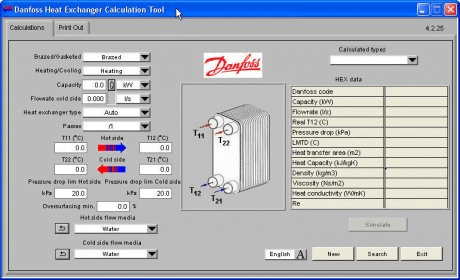

The calculator is using live power cost feed from US Department of Energy, which is updated every month, to give you most accurate estimates of power costs.
Heat unit calculator pro#
PRO TIP: Use our new AC Energy Cost calculator, to get an idea of how much it costs you to operate your Central Air Conditioner, based on your location, AC size, SEER rating, cooling days and local electric costs. On the other hand, installing a central AC that is too small will not keep your house cool! So while you will be saving money, you will not have the optimal temperature control. Today electricity is very expensive (anywhere from $0.12 / kWh in most southern states to $0.25-$0.45 / kWh in CA, MA, NJ, and most of New England) and you don’t want to waste it on running central air that is too big. The smallest central air conditioning unit is 18,000 BTUs (1.5 tons), while the largest is 60,000 BTUs (5 tons). Cornell Institute for Climate Smart Solutions.Getting the right size AC unit for your house is very important if you want to have the desired level of comfort and good energy efficiency. Climate Smart Farming Growing Degree Calculator. The ability to predict a crop's growth stage, relative to insect and weed life cycles, facilitates better management. Slight deviations in development can be expected if the crop or pest becomes limited by mechanisms other than heat, such as moisture or fertility. Research has shown that utilizing GDD provides a more accurate physiological estimate than calendar days alone. However, calendar days are often misleading, especially during early growth stages. People often utilize a calendar to predict plant and insect development for management decisions. If the high temperature for the day is above 86 degrees Fahrenheit, use this value instead of the actual high temperature. For example, corn development levels off at 86 degrees Fahrenheit. The growth rate of many crops and pests does not increase as temperature increases above a certain point. Mean temperature = 75☏ + 50☏/ 2 = 62.5☏Īdditional modifications exist for high temperature cutoffs. In the 'example #2' below, the recorded low temperature (45☏) was below the crop's base value (50° F) so we utilized the base temperature during this calculation. If the low temperature of the day is below your crop or pests' base value, use the base temperature during your calculations.

If the mean temperature is above the base temperature, then the GDD equals the value of the mean temperature minus the base temperature. If the mean temperature is at or below the base temperature for a crop or pest of interest, then the GDD value is zero.

To calculate GDDs you first need to record the mean temperature this can be done by adding together the high and low temperature for the day and dividing that value by two. Below a crop or pests' base temperature there is little growth occurring. Corn, sweet corn, sorghum, and soybeans have a base temperature of ~50 degrees Fahrenheit. Alfalfa that is relatively cool-adapted has a base temperature of 41 degrees Fahrenheit. We call this minimum development threshold a base temperature. The accumulation of average daily temperatures is calculated as 'growing degree days (GDD)' and includes a minimum development threshold that must be exceeded for growth to occur.

Growing degree days (GDD), or heat units, are used to estimate the growth and development of certain crops and pests during the growing season.Ĭorn growth, for example, follows very closely the accumulation of average daily temperatures during its lifetime.


 0 kommentar(er)
0 kommentar(er)
